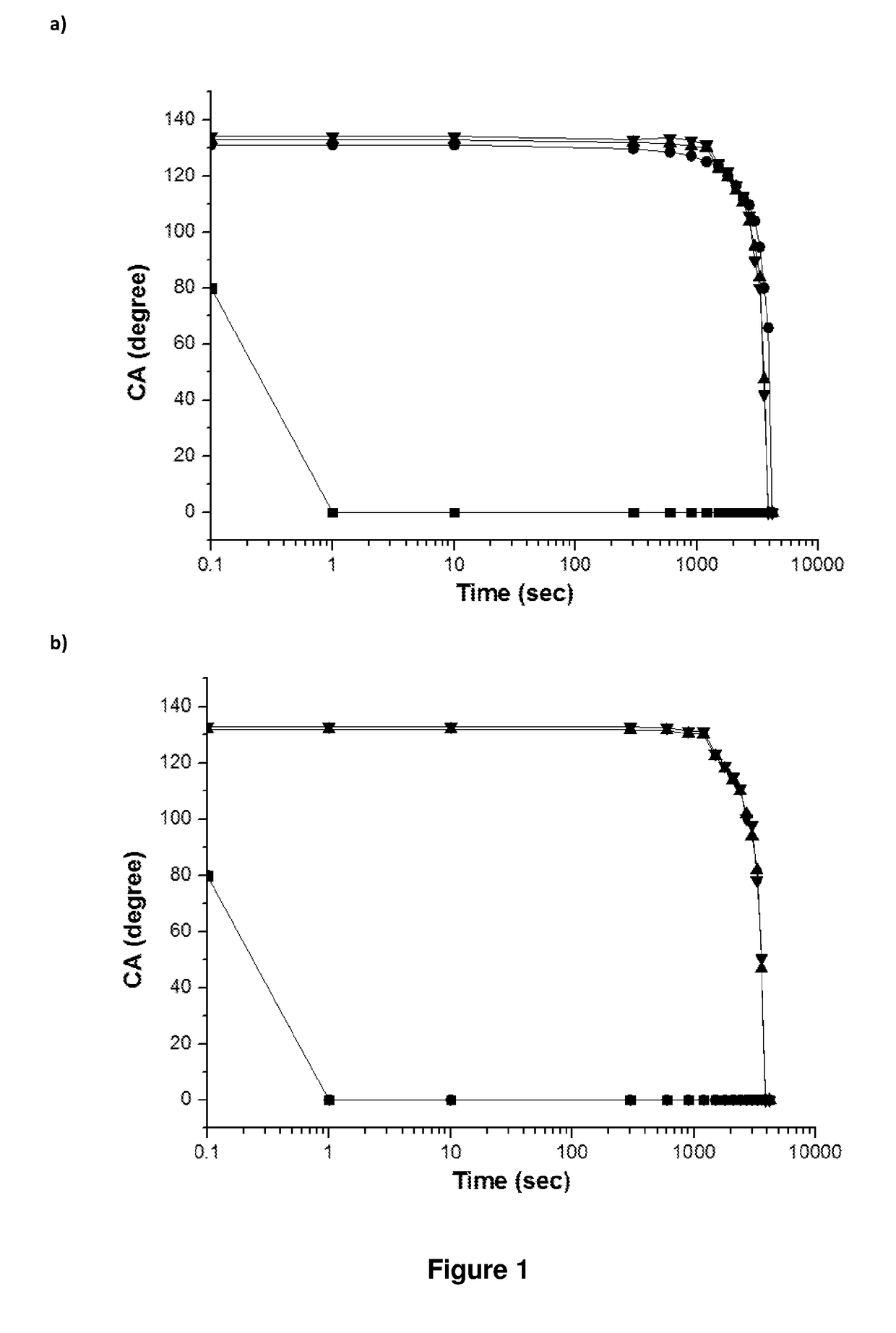Electrically conductive materials comprising graphene
a technology of electrically conductive materials and graphene, which is applied in the direction of dielectric characteristics, liquid repellent fibres, dyeing processes, etc., can solve the problems of reducing flexibility of end garments, e-textile development and subsequent utilization of wearable ‘smart’ garments, and high cost of e-textile production
- Summary
- Abstract
- Description
- Claims
- Application Information
AI Technical Summary
Benefits of technology
Problems solved by technology
Method used
Image
Examples
examples
[0110]Embodiments of the invention will be described, by way of example only, with reference to the accompanying drawings, in which:
[0111]FIG. 1 shows the contact angle of distilled water versus time at 25° C. on inkjet printed cotton fabrics (BD022) with polystyrene nanoparticles: (a) before wash and (b) after wash, wherein: (▪) control fabric; (●) NP1 without MF pre-treatment; (▴) NP1 with MF pre-treatment; and (▾) NP5 with MF pre-treatment.
[0112]FIG. 2 shows the contact angle of distilled water versus time at 25° C. on inkjet printed polyester fabrics (MK14) with nanoparticles before wash.
[0113]FIG. 3 shows the particle size distribution of cross-linked polystyrene nanoparticles (NP1). The Z-Average particle size of the polystyrene nanoparticle was found to be 63.12 nm (PDI=0.055)
[0114]FIG. 4 shows the Raman spectra of a BS8 pristine graphene dispersion drop casted onto a Si+SiO2wafer.
[0115]FIG. 5 shows the SEM images for 6 layers of inkjet printed composite ink (ink C) onto 12 l...
PUM
| Property | Measurement | Unit |
|---|---|---|
| Temperature | aaaaa | aaaaa |
| Temperature | aaaaa | aaaaa |
| Temperature | aaaaa | aaaaa |
Abstract
Description
Claims
Application Information
 Login to View More
Login to View More - R&D
- Intellectual Property
- Life Sciences
- Materials
- Tech Scout
- Unparalleled Data Quality
- Higher Quality Content
- 60% Fewer Hallucinations
Browse by: Latest US Patents, China's latest patents, Technical Efficacy Thesaurus, Application Domain, Technology Topic, Popular Technical Reports.
© 2025 PatSnap. All rights reserved.Legal|Privacy policy|Modern Slavery Act Transparency Statement|Sitemap|About US| Contact US: help@patsnap.com



